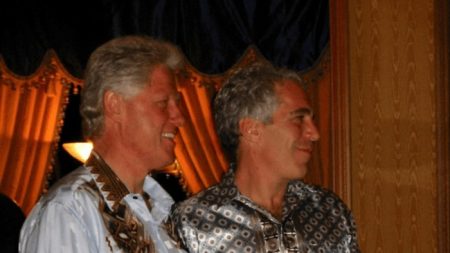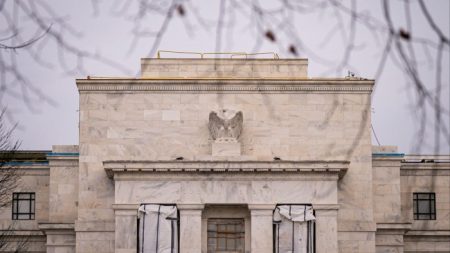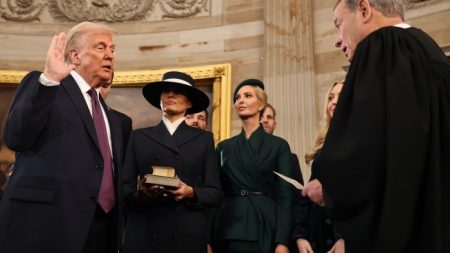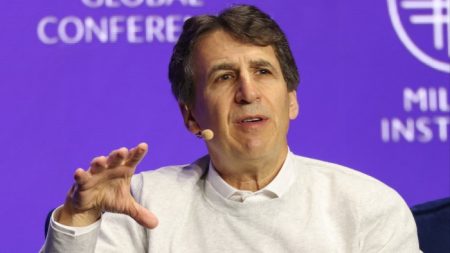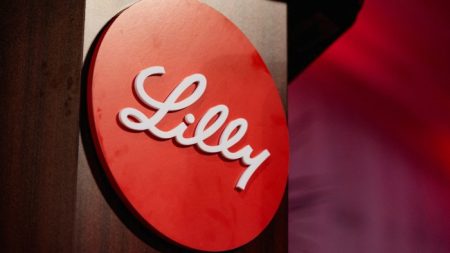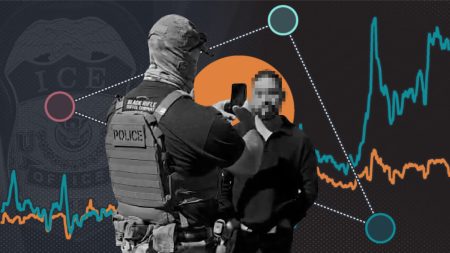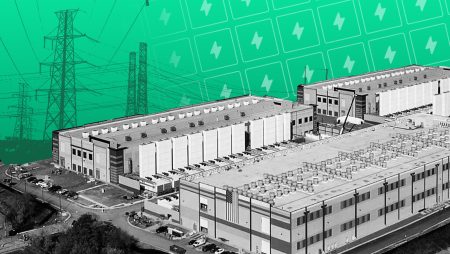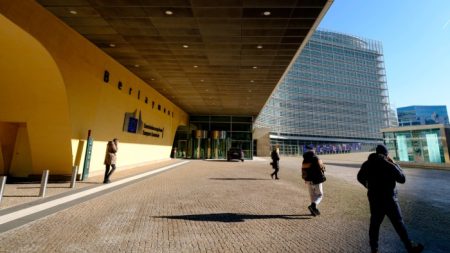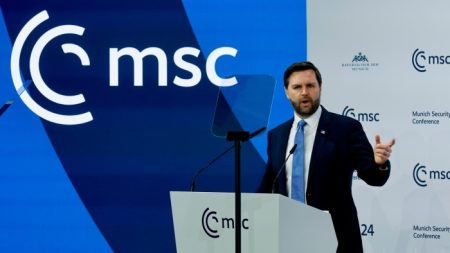Ole Jørgen Hammeken was at sea far inside the Arctic Circle when the Inuit elder found a crumpled old business card in the pocket of his sealskin coat that had survived almost a decade of blizzards and storms. It belonged to Donald Trump Jr.
The younger Trump had met Hammeken in 2016, hoping the Greenland resident and veteran polar explorer would take him hunting musk ox with a bow and arrow in the island’s extreme north. But then his father ran for president of the US and the trip fell through.
Now, almost a decade later, the Trumps were back in Greenland.
Trump Jr landed in the capital Nuuk for a surprise five-hour visit this week, shortly after Donald Trump, set to once again become US president, said he wanted to buy the island — which is part of the kingdom of Denmark — and refused to rule out using military force to do so.
It has thrown the vast, ice-covered land, whose 57,000 people live in some of the coldest and most remote corners of the world, into a geopolitical storm. EU leaders have struggled to respond to an apparent territorial threat from a Nato ally.
In Nuuk, where temperatures are below zero for much of the year and the winter daylight hours are short, Trump’s comments were unsettling for many. Greenlanders, several Nuuk residents said, tended to shy away from conflict in daily life, and were shocked by Trump’s aggressive tone.
“For some, it was frightening,” Hammeken said.
Many people were offended, Kuupik Kleist, a former prime minister of Greenland, said. They did not enjoy their homeland being discussed as a real estate deal.
“You don’t just go and buy a country, or its people,” Kleist said.
But Hammeken believes there is an upside to Trump’s interest in the island.
Many Greenlanders are familiar with the president-elect’s style and know not to take him literally, said Hammeken. They are happy that he has thrust the question of Greenland’s future into the global spotlight.
“Now Denmark has to listen,” Hammeken said.
Colonised by Denmark in the 18th century, Greenland has long lobbied for increased self-rule. Though it is now an autonomous Danish territory and has decision-making power on most subjects except foreign and security policy, all the Greenlanders who spoke to the FT in Nuuk said they wanted more political control.
“No one here wants to be part of the US, but they do want more influence over things,” said Bolette Nielsen, a mining consultant from the tiny cluster of towns and settlements on Greenland’s eastern coast.
At a café near Nuuk’s old Colonial Harbour district, where the statue of a Danish-Norwegian missionary looms over the fjord and is regularly doused with paint by protesters, Nielsen said Greenland’s biggest political faultline runs between those who want more autonomy as part of Denmark, and those who feel Greenland is able to fully go it alone.
Either way, “Trump has triggered a lot”, Nielsen said. “Denmark will have to listen to Greenland much more. We’ve been crying out for this for so long.”
Greenlanders gave many reasons for wanting to shake off Danish rule. Some described personal experiences of discrimination, while others spoke of inequities in pensions and pay between Greenlanders and Danes, or disparities in the provision of services such as higher education and healthcare.
Most of all, however, people cited recent revelations that in the 1960s, Danish doctors placed contraceptive coils in thousands of Inuit women without their consent, an act Greenland Prime Minister Múte Egede has described as a form of “genocide”.
On Friday — as a news ticker in the centre of Nuuk played Trump’s comments on a loop — Egede said at a news conference that the island did not want to be part of the US or Denmark. It wanted independence.
Denmark’s Prime Minister Mette Frederiksen replied that this was “legitimate and understandable”.
Hammeken said the exchange showed that “the balance between Greenland and Denmark has shifted tremendously in just the past few days”, thanks to Trump.

But many Greenlanders believe that the island does not have a strong enough economy to simply cut ties with Copenhagen and go it alone. This issue is expected to dominate the next election, due in the spring.
“When people talk about independence, I don’t fully understand what it means,” said John Hansen, a musician in Nuuk. Despite feeling strongly about his local identity — Hansen has compiled a book of Greenlandic poetry and songs — the artist said proponents of independence did not have a plan.
Greenland, the world’s largest island, remains financially dependent on Denmark, with 53 per cent of its budget in 2024 made up of a direct grant from Copenhagen. “How that’s going to be replaced is a mystery to me,” said Kleist.
“We are only living off the sea right now, and a little bit of tourism,” he said. Fishing accounts for 90 per cent of Greenland’s exports, and the industry is the second biggest employer after the state.
Nielsen said Greenland was “too small and too vulnerable” and needed to “strengthen other areas”.
One of those areas should be mining, people in Greenland’s business community said.
Though many international companies have licences to dig, and the island abounds with valuable rare earth minerals, few projects have come to fruition due to government regulation and the logistical challenges presented by the landscape.
Trump’s comments have boosted share prices of some local mining projects in recent days, with one person in the industry describing a “gold rush” feeling in the air.
At Nuuk’s snow-covered port, where small fishing boats and trawlers cut a path through chunks of floating ice to make it out to sea, fishermen chuckled at the idea of joining the US. But they said there was value in diversifying Greenland’s trade.
“In fisheries, we think about wanting to sell to America, not just to Denmark,” said Pavia Rasmussen as he ate a breakfast of raw seal meat at a clubhouse by the dock. “We think it could mean a better price for fish.”
More freedom to trade could also mean cheaper food imports from the US, Nils, another fisherman, said. “Food from Denmark is very expensive.”
Climate change is making the work of Greenlandic fishermen much harder, the men said. They already navigate turbulent weather and long winter nights. Now melting ice caps were affecting the supply of fish, said Ulrich, the head of a trawler and fish processing plant.
Those same climatic changes are opening up Arctic waters to more navigation and therefore competition over natural resources. Greenland, Ulrich felt, was caught in the middle of Trump’s “big game with Russia and China”.

Trump has cited US national security as the main reason he wants Greenland, which is home to a major US military base.
Greenlanders hoping for independence said they recognised that the island was not able to provide for its own defence. But they thought military support, as well as trade deals, could come from many quarters.
“Greenland is at the stage where it wants to have options,” the former government official said, adding that politicians were “courting” lots of countries, including talking to the UK.
Trump Jr’s visit to Nuuk this week lasted just a few hours, but kept residents talking for days. Local media reported that some of the people seen wearing ‘Make America Great Again’ hats at a meeting were attracted there by the promise of free food at an expensive restaurant.

But even the trip’s local co-ordinator — Jørgen Boassen, a Greenlandic bricklayer and Maga fan who door-knocked for Trump in the US during the election campaign — told Norwegian outlet VG that Trump’s comments about wanting to purchase Greenland should be “taken with a pinch of salt”.
It was about the message it sent.
“He came here to show Russia and China that Trump is here,” he said.
Cartography by Steven Bernard
Read the full article here





